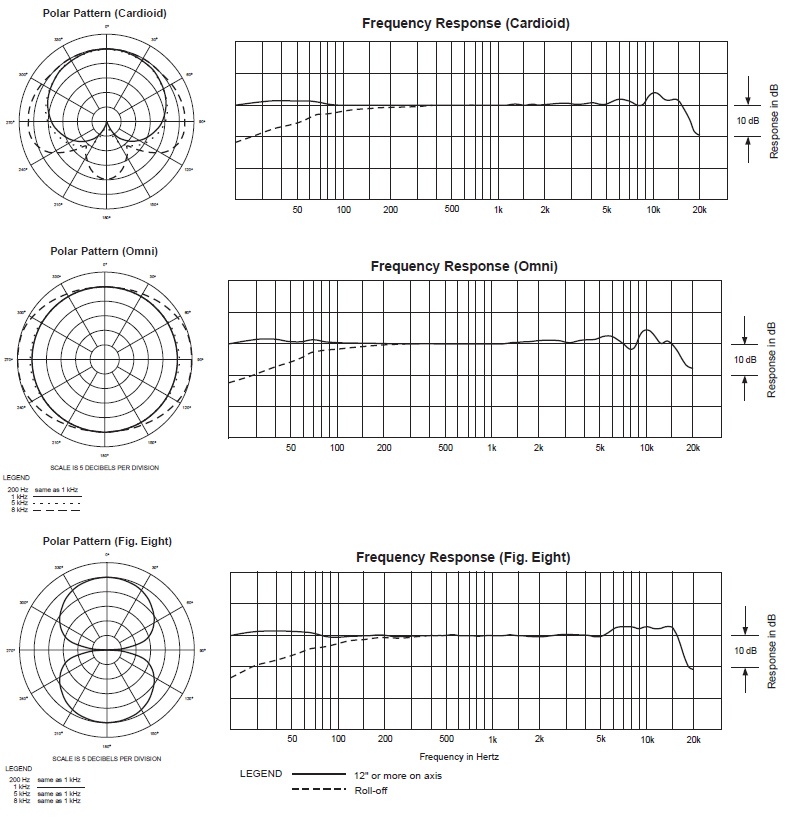So, when I had the opportunity to experience the value of a high quality microphone on vocals I wrote about it on a Facebook group called Move the Mics!, “I was part of an educational experiment this weekend. I ran sound for a regional bluegrass band, The High 48's, who use an AT4050 as their primary vocal mic and a collection of small and large condensers for solo instrument mics. They also have the usual SM58 at one end of the stage for introductions and a few backup vocals. When the banjo player sang or talked into the 58, he was unremarkable. When he sang or spoke into the AT4050, he was a dead ringer for Geoff Muldaur. I should note that I have always disliked the sound of 90% of most vocals through SM58's, but this was just a killer demo of why 58's should only be used to drive nails and for crappy punk vocals.”
I’m exaggerating, of course, and expecting sound geeks to get either humor or comprehend an experiment in quality evaluation is always a mistake. But I was surprised at the “loyalty” and emotion the defenders of the overused, rarely understood, and very successful Shure SM57/58. For example, “There are plenty of other mics I like better, but in a live environment, a 58 on vocals is rarely the weakest link in the chain. It's got good rejection, low handling noise, does well in wind, and is pretty hard to kill. With a little EQ, it works for almost anyone. Better mics are generally less neutral and can be quite picky about which vocalists they sound good on. If I was doing a tour for a band, I'd make sure I had everyone matched up with a great mic, but for doing random shows where you're lucky to get a sound check, a 58 is a safe bet that a good engineer can use to make just about anyone sound decent (well, a decent version of themselves). I wouldn't normally use it for vocals in a studio, but numerous great studio vocal tracks have been made with a 58 over the years, either as scratch vocals that got kept or when a vocalist insisted on holding a mic.
“If the banjo player sounded like a different person through the 58, I would have been scowling at the FOH engineer, not the mic.”
The idea that an SM58 could be EQ’d to sound like a high quality condenser microphone should be ludicrous to anyone experienced with either type of microphone. The delusion that “a 58 on vocals is rarely the weakest link in the chain” demonstrates a severe misunderstanding of the “garbage in, garbage out” concept. A quick look at the basic characteristics of the Shure SM58 should point out more than a few flaws in that claim. Add transient repsonse, noise rejection, phase accuracy, and harmonic and intermodulation distortion to the comparison and the idea that you can “fix” the differences with EQ becomes depressingly familiar.
A comparison to the characteristics of the Audio Technica AT4050 should be enlightening to an experienced, educated audio technician. In it’s worst, least accurate configuration the AT4050 delivers dramatically better frequency response, polar response, and a massively improved proximity characteristic when used at a foot or greater distance. In a group setting, this alone should be eye-opening. One of the defenders of the SM58 went on to say he’d used an SM58 in a chorus performance and it had performed “superbly.” When I expressed both doubt in his hearing and technical competence and gratitude that I hadn’t been forced (ever in my life) to make that kind of sacrifice, his response was to whine that I was jumping to conclusions without having had the pleasure of hearing the mess he’d made out of the performance. I will confess to that “crime.” I’ve heard thousands of miserable amplified live music performances and do not need any more of that kind of experience.

Maslow's golden hammer rule explains, "I suppose it is tempting, if the only tool you have is a hammer, to treat everything as if it were a nail." When the only microphone you know well enough to “trust” is an SM57/58 (and they are not the same hammer), every sound source has the characteristics as a nail. When your only expectation from a microphone is excessive gain-before-feedback and indestructibility, concepts like distortion, transient response, intelligibility, and accuracy are insignificant details. This is one of many reasons why live music is too often a painful and depressing experience to the few remaining people in this country who love music, know what musical instruments sound like, and would like to continue their lives with their hearing undamaged. I wish there was a fix for stupid, but unlike ignorance stupid can not be fixed.


No comments:
Post a Comment